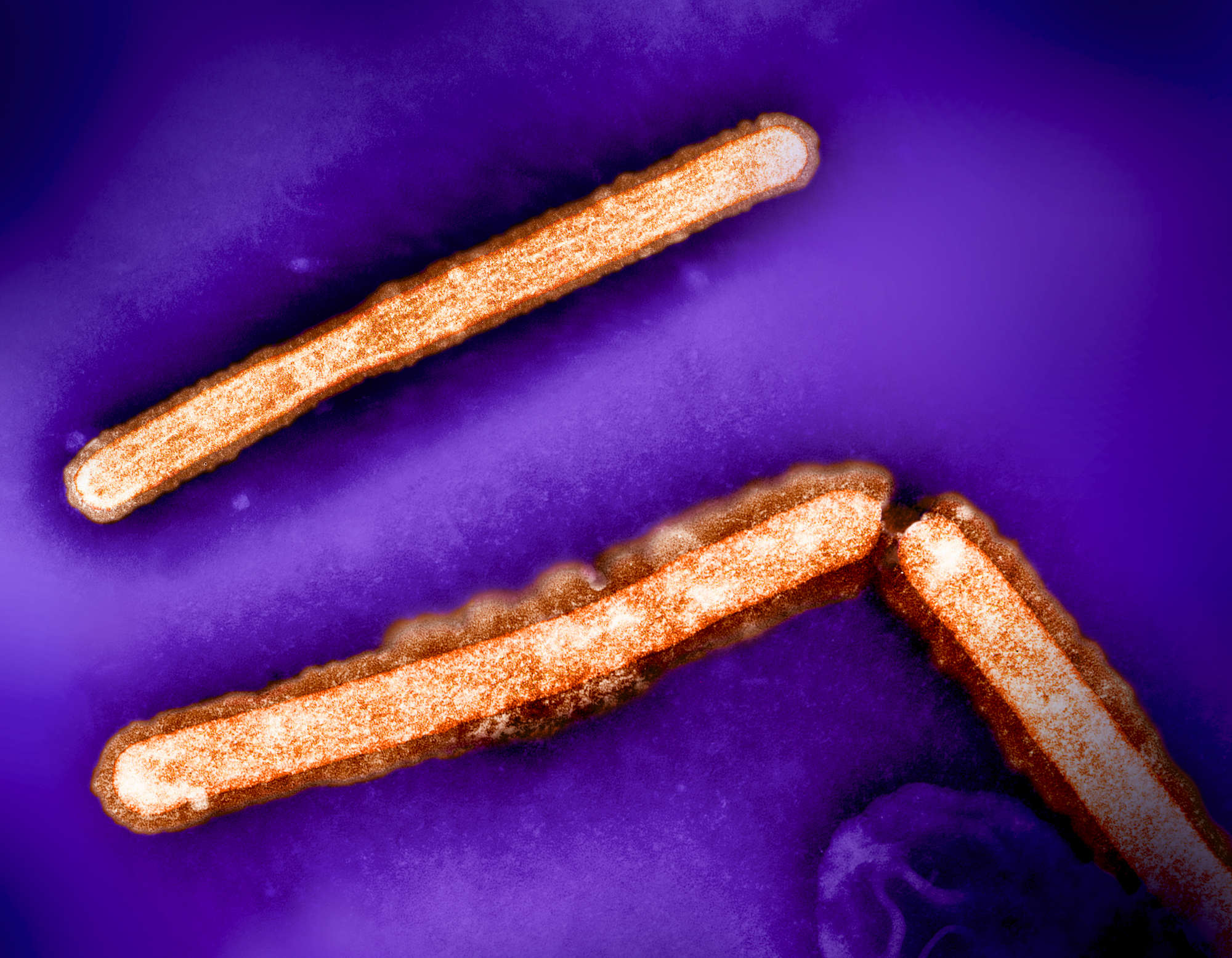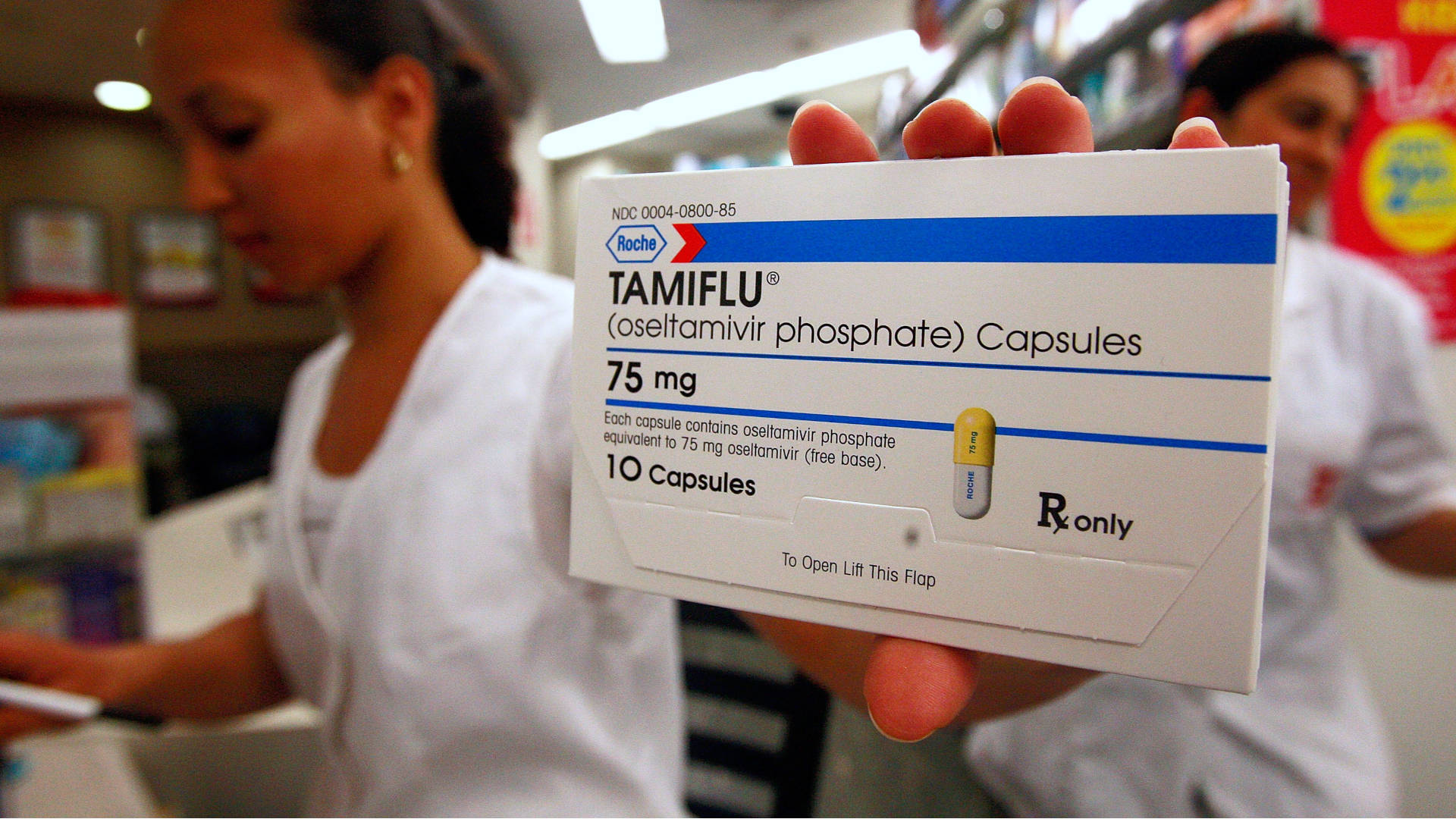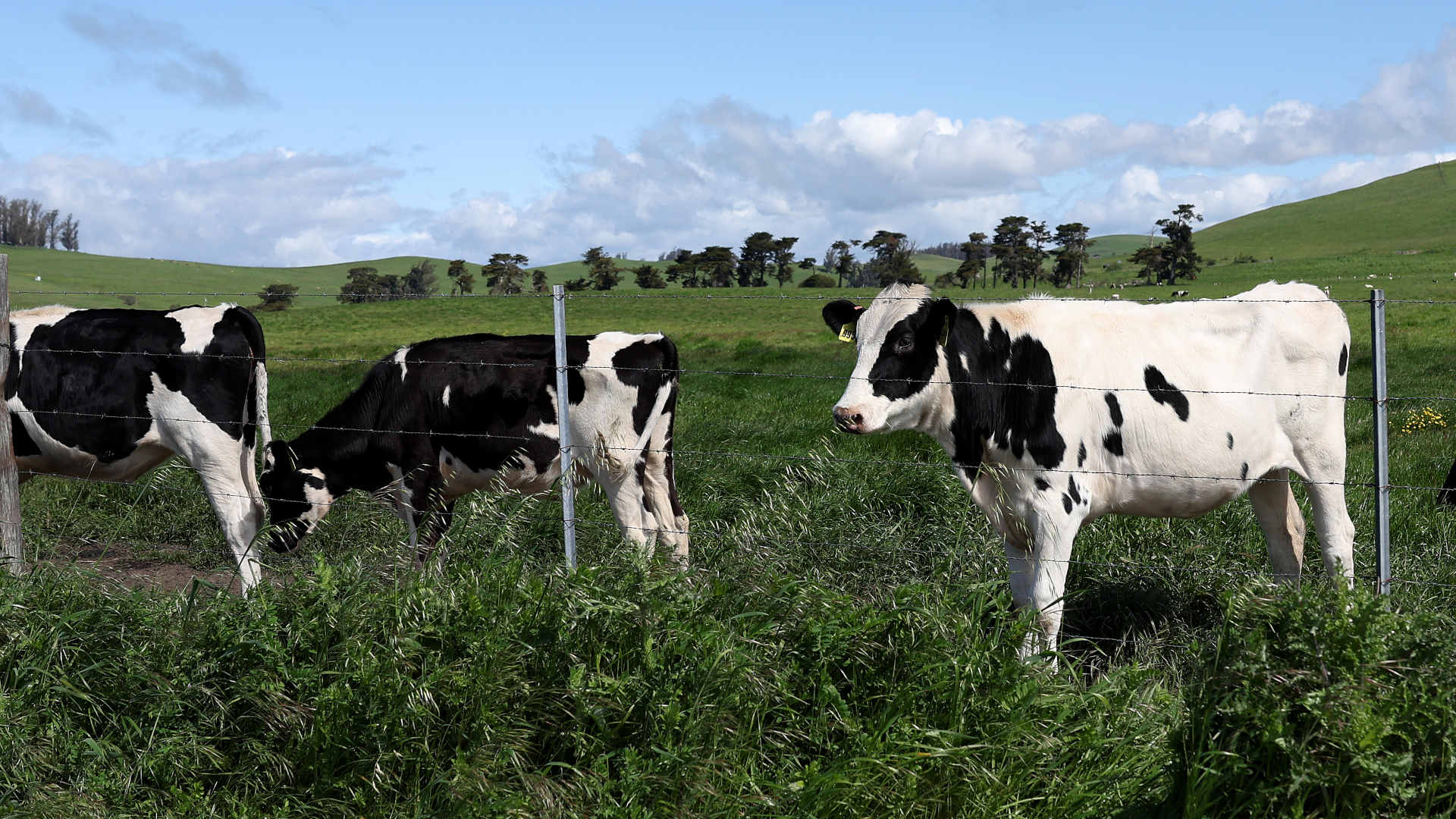Could an Old Drug Protect Against a New Pandemic?
Since reports emerged earlier this year that dairy cows across the country had been infected with H5N1 bird flu, the prospect that the virus could evolve to spark another pandemic has stoked serious concern.
But unlike Covid-19, the flu is an old, well-known foe. And health authorities have reassured the public that the U.S. has squirreled away millions of doses of the flu medication oseltamivir, known under the brand name Tamiflu. As health policy expert Leana S. Wen wrote in a Washington Post opinion piece, the drug “works against seasonal flu and is expected to work well against H5N1.”
While oseltamivir may help in cases of severe flu, some experts are concerned that the U.S. is banking far too much on a so-so drug while failing to prioritize research on new treatments.
Relatively few people have been infected with bird flu, so scientists must rely, in part, on oseltamivir’s track record against seasonal flu to make educated guesses about how well the drug would work against H5N1. But research shows that it doesn’t work particularly well for most people with garden-variety flu and doesn’t keep people out of the hospital. In fact, for standard-risk patients the drug’s effectiveness has proved “kind of crappy,” said Shira Doron, an infectious disease physician at Tufts Medical Center.
And even if it is effective against H5N1, “influenza strains are unpredictable in when they develop resistance,” said infectious disease clinician and researcher Andrew Pavia, who advises government and professional organizations on influenza and pandemic preparedness. In other words, what works today might not work tomorrow.
But promising alternatives are scarce, said Pavia. And largely because antiviral flu drugs haven’t been terribly profitable for drug companies, he said, there are few treatments in the pipeline.
For standard-risk patients the drug’s effectiveness has proved “kind of crappy.”
Both Doron and Pavia emphasized that the current risk to Americans — excluding farmworkers — from bird flu is low. At least so far, the disease appears to be hard to catch and rarely spreads from person to person. Since 2022, the U.S. Centers for Disease Control and Prevention has recorded only 15 probable cases. All but one were mild and involved farmworkers who were in direct contact with infected animals.
However, with a couple genetic shifts, the U.S. variant could evolve into a more virulent and widespread virus.
“We are vulnerable,” said Pavia. “And we should have a deeper bench in reserve.”
Oseltamivir has a controversial past. Governments around the world have spent billions of dollars to stockpile the drug since the early 2000s based on evidence that it reduced the risk of serious complications such as pneumonia for people with seasonal flu.
But as revealed in The BMJ’s open data campaign, and by reporting by The Guardian, and other outlets, scientists asserted that the drug’s manufacturer, Roche, had withheld unfavorable data. Evidence of the drug’s benefit, they say, hinged on cherry-picked, mostly unpublished trials funded by Roche.
According to the BMJ, in 2013, after years of pressure from the journal and Cochrane, a not-for-profit organization that conducts systematic reviews of medical treatments and devices, Roche finally released the full set of data it had on oseltamivir. Findings from Cochrane’s updated review incorporating the tranche of new data did not inspire much confidence: The drug shortened seasonal flu symptoms by about half a day for adults and a day for children, but didn’t reduce complications or keep people out of the hospital. It also increased the risk of nausea and vomiting.
“We are vulnerable. And we should have a deeper bench in reserve.”
Canadian researchers also concluded that oseltamivir did not reduce hospitalizations in an analysis of 15 clinical trials published in JAMA Internal Medicine last year.
Today, most experts agree that the best use of the drug is for people who are seriously ill or are at higher risk for complications. While there is little data from randomized clinical trials focused exclusively on that group, said Pavia, the overall weight of the evidence supports a significant benefit for high-risk or hospitalized patients.
There’s also no randomized clinical trial data on antivirals and H5N1. “In the absence of a randomized controlled clinical trial, I would never claim to guess what the effectiveness of that Tamiflu would be at preventing severe disease, hospitalization, and death,” said Doron, who along with Pavia is a member of a working group dedicated to avian flu at the Infectious Diseases Society of America. But, she said, evidence from some observational studies suggests the drug could be lifesaving for people hospitalized with severe bird flu.
In a 2010 study, for example, researchers used a global H5N1 registry to look at outcomes for 308 patients, about half of which got oseltamivir. The dataset wasn’t ideal — some information was missing, and treatment regimens varied. Still, after statistically adjusting for uncertainties, the researchers concluded that the drug cut the mortality rate by about half.

But over the last 14 years, the virus has continued to evolve. One way to predict if oseltamivir will work against current variants is to look for specific genomic sequences that indicate susceptibility to antiviral drugs, said Benjamin Anderson, an assistant professor of environmental and global health at the University of Florida. It’s reassuring, he said, that a recent study of viruses isolated from cows and cats infected in the U.S. outbreak found no genetic mutations that would confer antiviral resistance. However, he added in an email, “the influenza virus can mutate and we need to constantly [monitor] those changes to make sure resistance does not develop.”
In addition, to date, avian flu viruses have proved susceptible to oseltamivir and the same is true of the most recent strains, according to research by St. Jude Children’s Research Hospital.
Based on those laboratory findings, scientists have a “pretty good” sense that oseltamivir would have some effectiveness against the infections caused by the current H5N1 strains, said Anderson.
Exactly how effective is an open question. If oseltamivir worked about as well against H5N1 as it does seasonal flu, it could potentially benefit high-risk, very ill patients; for others, the drug wouldn’t necessarily do much to ease symptoms or keep them out of the hospital. So far, the U.S. has only seen mild H5N1 infections, which oseltamivir may not help, said Doron. Still, oseltamivir is a safe drug, she said, and given the uncertainties over how severe a case of H5N1 could become, use of the antiviral makes sense.
Public health authorities agree. The CDC advises treating known and suspected cases with oseltamivir as soon as possible. (The drug works best against seasonal flu when started within 48 hours of symptom onset.) As a preventive measure, the agency also recommends treating close contacts of those who get infected.
Those recommendations come out of abundance of caution, said Pavia. “You have a drug that is active in the test tube that makes a difference with other strains of influenza,” he said. “So, it’s been given to patients who probably would recover well without it.”
If H5N1 were to evolve into a pandemic virus, public health recommendations would probably echo those for seasonal flu, prioritizing use of oseltamivir for patients at highest risk, said Pavia. “Which, of course,” he said, “brings up the question of ‘Why don’t we have something better?’”
Oseltamivir is one of the best-studied antiviral flu treatments, but not the only one.
First approved as the brand name drug Tamiflu in 1999, oseltamivir belongs to a class of medications called neuraminidase inhibitors, which keep the virus from escaping infected cells and navigating to other cells.
The drugs target only one of the two types of proteins in Type A flus such as H5N1 and the seasonal flu, so they can’t completely neutralize the virus, said Hui-Ling Yen, an influenza researcher in the School of Public Health at the University of Hong Kong. Two other neuraminidase inhibitors exist — an inhaled drug and an intravenous one — but neither has been proven to work against severe seasonal flu, so the CDC doesn’t typically recommend them for H5N1.
“Why don’t we have something better?”
The newest flu drug on the market, baloxavir marboxil (also known as Xofluza), was approved in the U.S. in 2018 and works by blocking an enzyme that the virus uses to make copies of itself.
In terms of how quickly they alleviate symptoms, oseltamivir and baloxavir are on par, said Yen. But baloxavir is better at reducing the viral load — that is, the amount of virus circulating in the blood — she said, potentially shortening how long an infected person is contagious.
One of the biggest concerns with antivirals is that as flu viruses multiply, they can evolve to become resistant to treatments. While such mutations have been rare with oseltamivir, studies show that they happen more often in people taking baloxavir, said Pavia. That doesn’t have much of an effect on most people whose immune systems will clear the virus, said Pavia. But it could pose a problem for those with compromised immunity such as cancer patients who could harbor the resistant virus longer and possibly pass it on to others.
Should seasonal flu, H5N1, or any other variant develop resistance to oseltamivir and baloxavir, providers and their patients would have extremely limited options.
Support Undark Magazine
Undark is a non-profit, editorially independent magazine covering the complicated and often fractious intersection of science and society. If you would like to help support our journalism, please consider making a donation. All proceeds go directly to Undark’s editorial fund.
“Suffice it to say that we’re vulnerable,” said Pavia. When it comes to H5N1, so far, the analyses of U.S. strains have been reassuring. “The prevalence of resistance mutations was very, very low,” he said.
“But,” he added, “it’s not zero.” And Pavia said it’s not clear what it would take for one of those mutations to catch hold.
Pavia pointed to the example of SARS-CoV-2, the virus that causes Covid-19, which developed resistance to treatment with monoclonal (laboratory-made) antibodies within a matter of months each time researchers developed a new version.
One reason for the lack of alternatives is that antivirals are tricky to develop, said Anderson. Viruses can’t replicate on their own but rely on hijacking a living cell’s inner workings to make copies of themselves. That makes it hard to target a virus without harming the host cell. “Some antivirals are pretty harsh,” said Anderson. The goal is to find something that works without really severe side effects, he said. “For antivirals, it’s a much harder thing to come up with.”
One of the biggest concerns with antivirals is that as flu viruses multiply, they can evolve to become resistant to treatments.
By comparison, it’s easier to develop antibiotics to treat bacterial infections, he said. Bacteria are single-celled organisms that live on their own, and there are several approaches for taking them out that don’t damage healthy cells.
It would be great to have a better flu drug, said Pavia. One that helps someone recover quickly, that still works well even if started after they’ve been sick for several days. But antivirals — expensive to develop and taken for a short time — aren’t big money makers, he said.
Several factors disincentivize drug companies from developing antivirals for future pandemics, according to a 2023 Government Accountability Office report: It’s difficult to predict the timing and scale of demand for the drugs and developers prefer to focus on the existing market. Once a pandemic hits, political and social pressure to keep prices low limits profits. And so, devoting years and possibly billions of dollars to finding a new option hasn’t been a priority for drug companies.
“Would it make enough money to justify that investment by a large pharma company that’s doing very well, thank you, in other areas of the market?” asked Pavia. “Probably not.”
When it comes to preparing for the next pandemic, public health authorities tend to focus what’s available, rather than what’s ideal, said Anderson. “There’s a balance between what exists and then what needs to be developed,” he said. “It’s always easier to default to what exists.”
Currently, oseltamivir exists and is available. Although the exact contents of the U.S. Strategic National Stockpile are not publicly disclosed, federal officials said that we have tens of millions of courses of oseltamivir as well as hundreds of thousands of courses of baloxavir.
Even if oseltamivir is not a sure-fire antiviral, it will likely have some effect, said Anderson. In a pandemic preparedness plan, he said, “we’re going to include that as part of one of our tools, as well as vaccination, as well as other things, other strategies that would be a part of that plan.”
“There’s a balance between what exists and then what needs to be developed. It’s always easier to default to what exists.”
As things stand, Americans could be caught flatfooted in the face of pandemic of H5N1 or other form of flu, said Pavia, who has consulted for the CDC on seasonal and pandemic influenza issues. What the country needs is more and better flu treatments that the government could stockpile before the next pandemic. But that would require people to take the threat seriously, he said, and “Congress being willing to invest in things that we might need but might never use.” It would also, he added, require better incentives for pharmaceutical companies to develop novel antiviral treatments.
Meanwhile, on Sept. 6, the CDC reported the first case in the U.S. outbreak without a known exposure to sick or infected animals. The Missouri patient, who had underlying medical conditions, was hospitalized and has since recovered according to the agency.
“We don’t know if the Missouri case is evidence of human to human transmission, Pavia wrote in response to a follow-up email on the development. “If it is, it could suggest that there is more undetected transmission out there.” The big unknown is whether this case is an anomaly or portends wider spread of the disease. If America, and possibly the world, is on the cusp of a major H5N1 outbreak, then certainly society would be better served with a more robust arsenal of antivirals, said Pavia — “perhaps sooner rather than later.”











